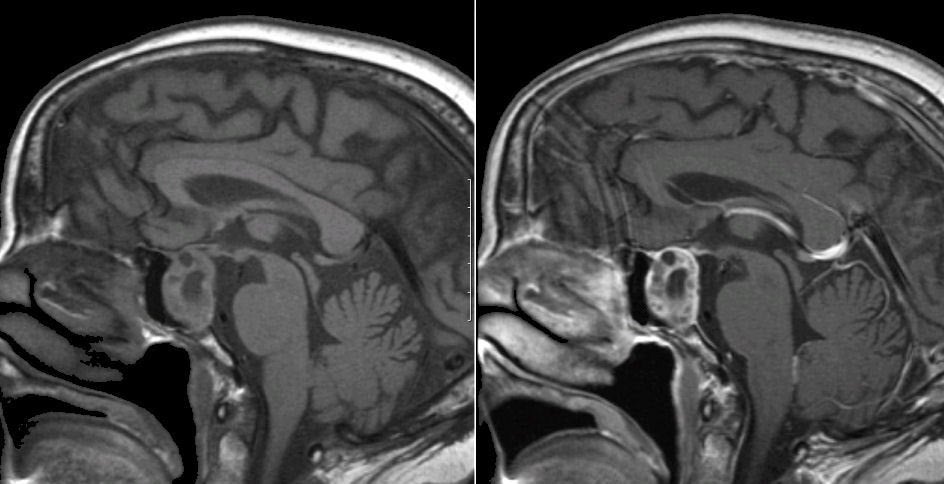
|
A 47 year-old woman developed headaches and blurred vision. On examination, she had pallor of the optic discs and a bitemporal hemianopsia. |

![]()
![]()
![]()
| Craniopharyngioma.
(Left) T1-weighted sagittal MRI; (Right) T1-weighted with
gadolinium sagittal MRI. Note the presence of a large suprasellar
mass that enhances and is partially cystic. Surgical removal
demonstrated a craniopharyngioma. Craniopharyngiomas arise in the
suprasellar region and are often calcified and cystic. They are slow
growing tumors that occur in children and adults, and can become very large in size. In children, they are thought to occur as
a result of impaired embryogenesis of structures in or near the infundibulum of the pituitary gland. In adults, they are believed to
occur as a result of metaplasia of pituitary squamous epithelium. Similar to
pituitary macroadenomas, they may present with endocrine dysfunction
or focal neurological signs due to mass effect in the suprasellar
region. |
Revised
11/28/06.
Copyrighted 2006. David C Preston